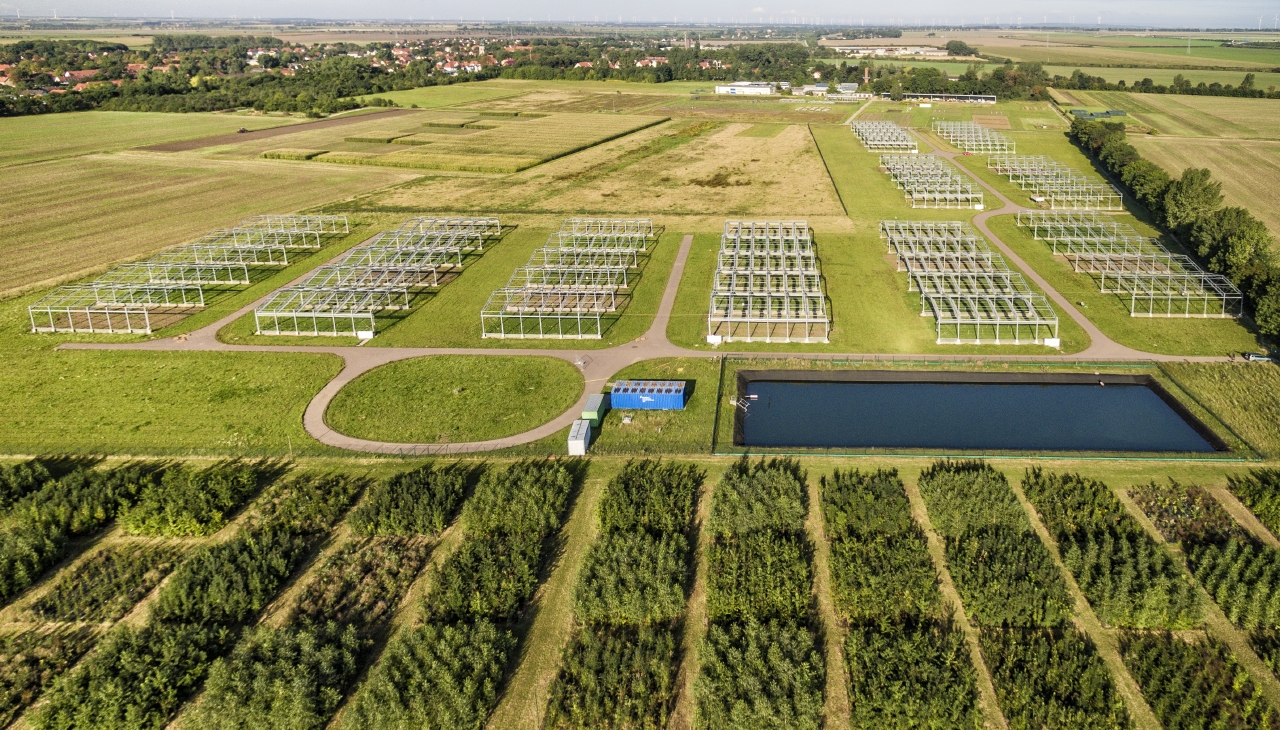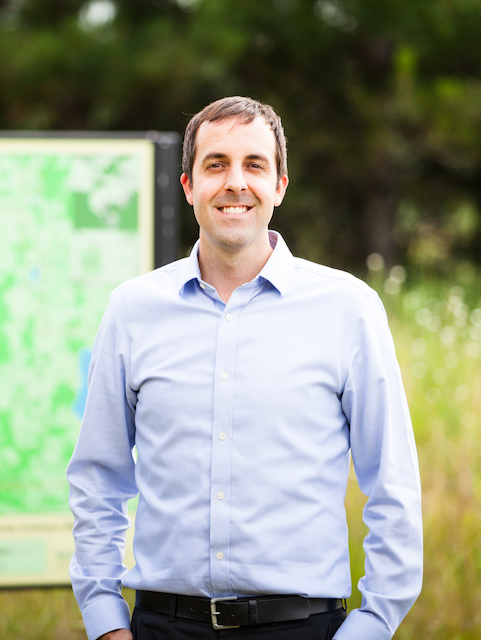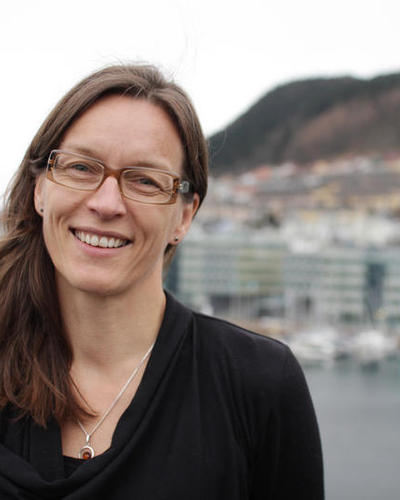Frontiers in experimental research on changing environments
Leipzig / Bad-Lauchstädt, Germany
 Foto: André Künzelmann/ UFZ
Foto: André Künzelmann/ UFZ
We are pleased to invite you to join us in Leipzig, Germany, from 7 till 9 June 2022 for the conference “Frontiers in experimental research on changing environments” The conference is jointly organized by the Helmholtz-Centre for Environmental Research – UFZ and the German Centre for Integrative Biodiversity Research – iDiv.
Experimental ecosystem research contributes significantly to better understanding how terrestrial ecosystems respond to human-induced environmental change, to deciphering the mechanisms behind these responses, and to enabling more sustainable land-use practices. During our conference, we will discuss the current status and the progress of field experiments in ecological and environmental research on a global scale. Symposium topics range from the effects of land-use change, climate change, air and soil pollution, and nutrient inputs on ecosystems to changing biodiversity and interactions in the above- and below-ground soil-plant system.
With this conference, we will also celebrate more than one century of experimental agricultural and environmental research at the Bad Lauchstädt field station since 1895. Important field experiments at our field research station range from the Static Fertilization Experiment set up in 1902 to the Global Change Experimental Facility (GCEF) established in 2013, and include numerous other small and larger field experiments. By now, the Bad Lauchstädt field station has become an important site of experimental ecosystem research around land use and climate change and the consequences for the soil-plant-atmosphere system, its functions and services - for the UFZ, the iDiv and numerous research partners from Germany and abroad.
With our virtual tour map you can already have today an overview of the all current research projects in Bad Lauchstädt. The experimental ecosystem research was also a cover story in our “UMWELTPERSPEKTIVEN”.
Keynote speaker

Prof. Dr. Ingrid Kögel-Knabner│Professorship Soil Science, TUM School of Life Sciences Weihenstephan
Lehrstuhl für Bodenkunde (Prof. Kögel-Knabner) 85354 Freising, Emil-Ramann-Str. 2
Phone +49 (8161) 71 - 517
E-mail
website
Academic career and research areas
Soil processes and soil management, especially the type and intensity of land use, affect the global carbon cycle. Prof. Kögel-Knabner (b. 1958) investigates the formation, composition and properties of organic matter in soils and their central role in the global carbon cycle. She uses sophisticated spectroscopic methods, such as 13C NMR spectroscopy and nanoSIMS, to investigate the association of organic and mineral matter in soils at the submicron scale. Prof. Kögel-Knabner studied geoecology at the University of Bayreuth, where she also obtained a doctorate in soil science (1987) and earned her post-doctoral teaching qualification (Habilitation 1992). In 1991, she was appointed to a professorship for soil science and soil ecology at the Ruhr-Universität Bochum. Since 1995, she has served as Chair of Soil Science at TUM. Prof. Kögel-Knabner is a member of academies (Leopoldina, acatech, Bavarian Academy of Sciences) and was member of the Bioeconomy Council of the German Federal Government. Since 2015, she has been on the list of "Highly Cited Researchers", and counts among the most cited scientists in the world.
Awards
- German Environment Award, German Federal Environment Foundation (2019)
- Bavarian Maximilian Order for Science and Art (2018)
- Philippe-Duchaufour-Medal, European Geosciences Union (2015)
- Emil-Ramann-Medal, German Soil Science Society (2015)
- Order of Merit of the Federal Republic of Germany (2013)
Key Publications
Vogel C, Mueller CW, Höschen C, Buegger F, Heister K, Schulz S, Schloter M, Kögel-Knabner I: "Submicron structures provide preferential spots for carbon and nitrogen sequestration in soils". Nature Communications. 2014; 5: 2947.
Wiesmeier M, Spörlein P, Geuß U, Hangen E, Haug S, Reischl A, Schilling B, von Lützow M, Kögel-Knabner I: "Soil organic carbon stocks in southeast Germany (Bavaria) as affected by land use, soil type and sampling depth". Global Change Biology. 2012; 18: 2233-2245.
Rumpel C, Kögel-Knabner I: “Deep soil organic matter a key but poorly understood component of terrestrial C cycle”. Plant and Soil. 2011; 338: 143-158.
Kögel-Knabner I, Amelung W, Cao ZH, Fiedler S, Frenzel P, Jahn R, Kalbitz K, Kölbl A, Schloter M: “Biogeochemistry of paddy soils”. Geoderma. 2010; 157: 1-14.
Kögel-Knabner I, Ekschmitt K, Flessa H, Guggenberger G, Matzner E, Marschner B, Von Lützow M: “An integrative approach of organic matter stabilization in temperate soils: Linking chemistry, physics, and biology”. Journal of Plant Nutrition and Soil Science. 2008; 171: 5-13.

Forest Isbell│Associate Director of Cedar Creek, Assistant Professor in Department of Ecology, Evolution and Behavior
University of Minnesota, College of Biological Sciences Saint Paul, Minnesota, USA
E-mail
website
Research interests
• Biodiversity• Ecosystem functioning
• Stability
• Ecosystem services
• Nutrient enrichment
• Land use changes
• Exotic species
• Extreme climatic events
Research statement
I am broadly interested in questions at the intersection of community and ecosystem ecology. I use field experiments to investigate the causes and consequences of changes in plant diversity, often in grasslands at Cedar Creek Ecosystem Science Reserve. I also lead synthesis studies across many ecosystems to determine the generality of our findings at Cedar Creek.
To understand the causes of changes in plant diversity, I study how biodiversity responds to anthropogenic drivers, such as land use changes, nutrient enrichment, exotic species invasions, and extreme climatic events. I am particularly interested in whether cessation of these anthropogenic perturbations leads to recovery of biodiversity, or whether the community remains stuck in a depauperate state. To understand the consequences of changes in plant diversity, I study how ecosystem functioning (for example, productivity) and ecosystem services (for example, carbon storage for climate regulation) respond to changes in plant diversity. I am now combining these efforts to quantify the extent to which anthropogenic drivers influence ecosystem processes by restructuring communities and altering biodiversity.
Selected Publications
Isbell, F., D. Tilman, P. B. Reich, and A. T. Clark. 2019. Deficits of biodiversity and productivity linger a century after agricultural abandonment. Nature Ecology and Evolution 3:1533-1538
Isbell, et al. 2017 Linking the influence and dependence of people on biodiversity across scales Nature 546:65-72
Isbell, et al. 2017 Benefits of increasing plant diversity in sustainable agroecosystems Journal of Ecology 105:871-879
Isbell, F., et al. 2015. Biodiversity increases the resistance of ecosystem productivity to climate extremes. Nature 526:574-577.
Isbell, F., et al. 2015. The biodiversity-dependent ecosystem service debt. Ecology Letters 18:119-134.
Hautier, Y., D. Tilman, F. Isbell, et al. 2015. Anthropogenic environmental changes affect ecosystem stability via biodiversity. Science 348:336-340.
Isbell, F., et al. 2013. Nutrient enrichment, biodiversity loss, and consequent declines in ecosystem productivity. Proc. Natl. Acad. Sci. U.S.A. 110:11911–11916.
Isbell, F., et al. 2013. Low biodiversity state persists two decades after cessation of nutrient enrichment. Ecology Letters 16:454-460.
Reich, P. B., D. Tilman, F. Isbell, et al. 2012. Impacts of biodiversity loss escalate through time as redundancy fades. Science 336:589-592.
Tilman, D., P. B. Reich, and F. Isbell. 2012. Biodiversity impacts ecosystem productivity as much as resources, disturbance, or herbivory. Proc. Natl. Acad. Sci. U.S.A. 109:10394–10397.
Isbell, F., et al. 2011. High plant diversity is needed to maintain ecosystem services. Nature 477:199-202.
Isbell, F. I., and B. J. Wilsey. 2011. Increasing native, but not exotic, biodiversity increases aboveground productivity in ungrazed and intensely grazed grasslands. Oecologia 165: 771-781.
.jpg)
Osvaldo Sala│Founding Director
Global Drylands Center
School of Life Sciences Arizona State University PO Box 874501 Tempe, AZ 85287-4501
Phone 480-965-4120
E-mail
website
Research areas
- Microclimate
- Agriculture
- Climate change
- Biodiversity
- Ecology
- Natural resources
- Ecosystems
- Botany
- Life on land
- Terrestrial ecology
- Natural resource management
- Scenario analysis
- Geochemistry
- Desertification
- Climate change and adaptation
- Biogeochemistry
- Bioenergy
- Ecosystem services
- Modeling and simulation
- Socioecology
- Complex relationships
Osvaldo Sala joined Arizona State University as a Julie A. Wrigley Professor in the School of Life Science and School of Sustainability in August 2010. As current president of the Ecological Society of America and active field ecologists , Sala is an international leader in ecological science and global environmental policy.
Sala has explored several topics throughout his career including water controls on carbon and nitrogen dynamics in arid and semi-arid ecosystems, the consequences of changes in biodiversity on the functioning of ecosystems, and the development of biodiversity scenarios for the next 50 years. While pursuing all these different questions, he used different tools from direct observations, manipulative field experiments, to simulation modeling. His work encompasses a broad range of scales from the global to specific regions. He has worked in the Patagonian steppe, annual grasslands of California, steppes of Colorado and deserts of Southern Africa and currently he has experiments in the Chihuahuan Desert in New Mexico. His work is reflected in more than 200 peer-reviewed publications and several co-authored books.
Osvaldo Sala is an elected member of the American Academy of Arts and Sciences, the Argentinean National Academy of Sciences, and the Argentinean National Academy of Physical and Natural Sciences and is Fellow of the American Geophysical Union, Ecological Society of America and the American Association for the Advancement of Science.
Key Publications
2020
Andriuzzi, W. S., A. L. Franco, K. E. Ankrom, S. Cui, C. Milano de Tomasel, P. Guan, L. A. Gherardi, O. E. Sala and D. H. Wall. 2020. Body size structure of soil fauna along geographic and temporal gradients of precipitation in grasslands. Soil Biology and Biochemistry 140(Jan):107638. DOI: 10.1016/j.soilbio.2019.107638.
2019
Apodaca, M., J. McInerney, O. E. Sala, L. Katinas and J. Crisci. 2019. A concept map of evolutionary biology to promote meaningful learning in biology. American Biology Teacher 81(2):79-87. DOI: 10.1525/abt.2019.81.2.79.
Corman, J. R., S. L. Collins, E. M. Cook, X. Dong, L. A. Gherardi, N. B. Grimm, R. L. Hale, T. Liu, J. Ramos, L. G. Reichmann and O. E. Sala. 2019. Foundations and frontiers of ecosystem science: Legacy of a classic paper (Odum 1969). Ecosystems 22(5):1160-1172. DOI: 10.1007/s10021-018-0316-3
Delgado-Baquerizo, M., R. D. Bardgett, P. M. Vitousek, F. Maestre, M. A. Williams, D. J. Eldridge, H. Lambers, S. Neuhauser, A. Gallardo, L. García-Velázquez, O. E. Sala, S. Abades, F. D. Alfaro, A. A. Berhe, M. A. Bowker, C. M. Currier, N. A. Cutler, S. C. Hart, P. E. Hayes, Z. Hseu, M. Kirchmair, V. M. Pena-Ramirez, C. A. Perez, S. C. Reed, F. Santos, C. Siebe, B. W. Sullivan, L. Weber-Grullon and N. Fierer. 2019. Changes in belowground biodiversity during ecosystem development. Proceedings of the National Academy of Sciences of the United States of America 116(14):6891-6896. DOI: 10.1073/pnas.1818400116.
Franco, A. L., L. A. Gherardi, C. Milano de Tomasel, W. S. Andriuzzi, K. E. Ankrom, E. A. Shaw, E. M. Bach, O. E. Sala and D. H. Wall. 2019. Drought suppresses soil predators and promotes root herbivores in mesic, but not in xeric grasslands. Proceedings of the National Academy of Sciences of the United States of America 116(26):12883-12888. DOI: 10.1073/pnas.1900572116.
Gherardi, L. A. and O. E. Sala. 2019. Effect of interannual precipitation variability on dryland productivity: A global synthesis. Global Change Biology 25(1):269-276. DOI: 10.1111/gcb.14480.
Komatsu, K., M. L. Avolio, N. P. Lemoine, F. Isbell, E. Grman, G. R. Houseman, S. E. Koerner, D. S. Johnson, K. R. Wilcox, J. M. Alatalo, J. P. Anderson, R. Aerts, S. G. Baer, A. H. Baldwin, J. Bates, C. Beierkuhnlein, R. T. Belote, J. Blair, J. M. Bloor, P. J. Bohlen, E. W. Bork, E. H. Boughton, W. D. Bowman, A. J. Britton, J. F. Cahill Jr, E. Chaneton, N. R. Chiariello, J. Cheng, S. L. Collins, J. H. Cornelissen, G. Du, A. Eskelinen, J. Fim, B. Foster, L. Gough, K. Gross, L. M. Hallett, X. Han, H. Harmens, M. J. Hovenden, A. Jagerbrand, A. Jentsch, C. Kern, K. Klanderud, A. K. Knapp, J. Kreyling, W. Li, Y. Luo, R. L. McCulley, J. R. McLaren, J. P. Megonigal, J. W. Morgan, V. G. Onipchenko, S. C. Pennings, J. Prevey, J. N. Price, P. B. Reich, C. H. Robinson, F. L. Russell, O. E. Sala, E. W. Seabloom, M. D. Smith, N. A. Soudzilovskaia, L. Souza, K. N. Suding, K. B. Suttle, T. Svejcar, D. Tilman, P. M. Tognetti, R. Turkington, S. R. White, Z. Xu, L. Yahdjian, Q. Yu, P. Zhang and Y. Zhang. 2019. Global change effects on plant communities are magnified by time and the number of global change factors imposed. Proceedings of the National Academy of Sciences of the United States of America 116(36):17867-17873. DOI: 10.1073/pnas.1819027116.
Sala, O. E., C. G. Boone, B. L. Turner II and C. M. Currier. 2019. The sustainability publication gap and its implications. Current Opinion in Environmental Sustainability 39(Aug):39-43. DOI: 10.1016/j.cosust.2019.06.006
 Vigdis Vandvik | Professor, Centre Director, bioCEED; Department of Biological Sciences (BIO)
Vigdis Vandvik | Professor, Centre Director, bioCEED; Department of Biological Sciences (BIO)
University of Bergen, Norway
Postbox 7803
5020 Bergen
E-mail
website
Research statement
I am a community ecologist interested in how natural and human global change drivers affect populations, communities and ecosystems at different spatial and temporal scales. My research falls into three broad categories;
- How do local and regional processes interact to shape the patterns in diversity, abundance and function that we observe in nature?
- How does environmental changes affect plants, and how do these effects scale across levels of organization from individuals via populations to communities?
- What are the impacts of human land-use regimes, past and present, on terrestrial ecosystems?
I study these topics by a combination of of laboratory experiments, field experiments, and field observations. Through my own research projects and collaborations in Norway, Europe, the US, Uganda, Nepal, China, and Peru I get the opportunity to explore these questions in different regions, study systems, and by using different methods.
I have also worked with nature management and conservation authorities in Norway, with IPBES, and the UNESCO-recognised Heathland Centre at Lygra to explore science-policy links relating to my research.
Selected publications
- Klanderud, Kari; Meineri, Eric Pierre F; Goldberg, Deborah E.; Michel, Pascale; Berge, Astrid; Guittar, John L.; Vandvik, Vigdis. 2021. Vital rates in early life history underlie shifts in biotic interactions along bioclimatic gradients: An experimental test of the Stress Gradient Hypothesis. Journal of Vegetation Science (JVS). 10 pages.
- Thomson, Eleanor R.; Spiegel, Marcus P.; Althuizen, Inge; Bass, Polly; Chen, Shuli; Chmurzynski, Adam; Rechsteiner, Aud Helen Halbritter; Henn, Jonathan J.; Kolka, Ingibjörg Jónsdóttir; Klanderud, Kari; Li, Yaoqi; Maitner, Brian S.; Michaletz, Sean T.; Niittynen, Pekka; Roos, Ruben Erik; Telford, Richard James; Enquist, Brian J.; Vandvik, Vigdis; Macias-Fauria, Marc; Malhi, Yadvinder. 2021. Multiscale mapping of plant functional groups and plant traits in the High Arctic using field spectroscopy, UAV imagery and Sentinel-2A data. Environmental Research Letters. 20 pages.
- Veselá, Andrea; Hadincová, Věroslava; Vandvik, Vigdis; Münzbergová, Zuzana. 2021. Maternal effects strengthen interactions of temperature and precipitation, determining seed germination of dominant alpine grass species. American Journal of Botany. 798-810.
- Lynn, Joshua Scott; Klanderud, Kari; Telford, Richard James; Goldberg, Deborah E.; Vandvik, Vigdis. 2021. Macroecological context predicts species' responses to climate warming. Global Change Biology. 2088-2101.
- Birkeli, Kristine; Gya, Ragnhild; Haugum, Siri Vatsø; Velle, Liv Guri; Vandvik, Vigdis. 2021. How resilient is Calluna vulgaris to drought during germination and its seedling stage? Ecology and Evolution.
- Münzbergová, Zuzana; Vandvik, Vigdis; Hadincová, Věroslava. 2021. Evolutionary rescue as a mechanism allowing a clonal grass to adapt to novel climates. Frontiers in Plant Science. 12 pages.
- Sporbert, Maria; Welk, Erik; Seidler, Gunnar; Jandt, Ute; Acíc, Svetlana; Biurrun, Idoia; Campos, Juan Antonio; Čarni, Andraž; Cerabolini, Bruno E.L.; Chytrý, Milan; Custerevska, Renata; Dengler, Jürgen; De Sanctis, Michele; Dziuba, Tetiana; Fagúndez, Jamie; Field, Richard; Golub, Valentin; He, Tianhua; Jansen, Florian; Lenoir, Jonathan; Marcenó, Corrado; Martín-Forés, Irene; Moeslund, Jesper Erenskjold; Moretti, Marco; Niinemets, Ülo; Peñuelas, Josep; Pérez-Haase, Aaron; Vandvik, Vigdis; Vassilev, Kiril; Vynokurov, Denys; Bruelheide, Helge. 2021. Different sets of traits explain abundance and distribution patterns of European plants at different spatial scales. Journal of Vegetation Science (JVS). 14 pages.
- Kemppinen, Julia; Niittynen, Pekka; le Roux, Peter C.; Momberg, Mia; Happonen, Konsta; Aalto, Juha; Rautakoski, Helena; Enquist, Brian J.; Vandvik, Vigdis; Rechsteiner, Aud Helen Halbritter; Maitner, Brian S.; Luoto, Miska. 2021. Consistent trait-environment relationships within and across tundra plant communities. Nature Ecology and Evolution. 458-467.
- Plue, Jan; Van Calster, Hans; Auestad, Inger; Basto, Sofia; Bekker, Renee M.; Bruun, Hans Henrik; Chevalier, Richard; Decocq, Guillaume; Grandin, Ulf; Hermy, Martin; Jacquemyn, Hans; Jakobsson, Anna; Jankowska‐Błaszczuk, Małgorzata; Kalamees, Rein; Koch, Marcus A.; Marrs, Rob H.; Marteinsdóttir, Bryndís; Milberg, Per; Måren, Inger Elisabeth; Pakeman, Robin J.; Phoenix, Gareth K.; Thompson, Ken; Vandvik, Vigdis; Wagner, Markus; Auffret, Alistair G. 2021. Buffering effects of soil seed banks on plant community composition in response to land use and climate. Global Ecology and Biogeography. 128-139.
- Gya, Ragnhild; Geange, Sonya Rita; Lynn, Joshua; Spindelbøck, Joachim Paul; Wallevik, Øystein; Zernichow, Camilla; Vandvik, Vigdis. 2021. A test of local adaptation to drought in germination and seedling traits in populations of two alpine forbs across a 2000 mm/year precipitation gradient. Ecology and Evolution.
- De Boeck, Hans J.; Bloor, Juliette M. G.; Aerts, Rien; Bahn, Michael; Beier, Claus; Emmett, Bridget A.; Estiarte, Marc; Grünzweig, José M; Halbritter Rechsteiner, Aud Helen; Holub, Petr; Jentsch, Anke; Klem, Karel; Kreyling, Juergen; Kröel-Dulay, György; Larsen, Klaus Steenberg; Milcu, Alexandru; Roy, Jacques; Sigurdsson, Bjarni D.; Smith, Melinda D.; Sternberg, Marcelo; Vandvik, Vigdis; Wohlgemuth, Thomas; Nijs, Ivan; Knapp, Alan K. 2020. Understanding ecosystems of the future will require more than realistic climate change experiments – a response to Korell et al. Global Change Biology. e6-e7.
- Valencia, Enrique; de Bello, Francesco; Galland, Thomas; Adler, Peter B.; Lepš, Jan; E-Vojtkó, Anna; van Klink, Roel; Carmona, Carlos P.; Danihelka, Jiří; Dengler, Jürgen; Eldridge, David J.; Estiarte, Marc; García‐González, Ricardo; Garnier, Eric; Gómez-García, Daniel; Harrison, Susan P.; Herben, Tomas; Ibáñez, Ricardo; Jentsch, Anke; Juergens, Norbert; Kertész, Miklós; Klumpp, Katja; Louault, Frédérique; Marrs, Rob; Ogaya, Romà; Onodi, Gábor; Pakeman, Robin J.; Pardo, Iker; Pärtel, Meelis; Peco, Begoña; Peñuelas, Josep; Pywell, Richard F.; Rueda, Marta; Schmidt, Wolfgang; Schmiedel, Ute; Schuetz, Martin; Šmilauer, Petr; Šmilauerová, Marie; Smit, Christian; Song, Ming-Hua; Stock, Martin; Val, James; Vandvik, Vigdis; Ward, David; Wesche, Karsten; Wiser, Susan; Woodcock, Ben A.; Young, Truman P.; Yu, Fei-Hai; Zobel, Martin; Gotzenberger, Lars. 2020. Synchrony matters more than species richness in plant community stability at a global scale. Proceedings of the National Academy of Sciences of the United States of America. 24345-24351.
Topics
Land-use change is one of the major drivers affecting terrestrial ecosystems, including both the above-ground and the soil sub-system. This includes changes in the type of land-use such as the transformation of (semi-)natural ecosystems into arable land, but also the change in land-use intensity and the fragmentation of whole landscapes. In this session, we will present and discuss recent experimental results and the variety of experimental approaches to understand and mitigate ecosystem responses to land-use change.
Despite international agreements on goals to limit the increase in global temperatures by reducing anthropogenic greenhouse gas emissions, there is an undamped change of climatic factors. The unprecedented speed of climate change has been shown to cause strong changes in the structure and dynamics of ecosystems as well as the services they provide to humankind. In this session, we will present empirical approaches to assess the consequences of climate change for ecosystems including agricultural systems.
Pollution of air, soil, and water by a variety of chemical compounds originating, for instance, from industry, agriculture or transportation are one of the major threats to biodiversity and whole ecosystems. This includes in particular the atmospheric deposition of nutrients which may lead to ecosystem eutrophication with profound effects on aboveand below-ground communities, on food webs, and on matter cycling. We will discuss recent results and highlight experimental advances to understand and forecast ecosystem responses to pollution by nutrients and other chemical substances.
non-additive. However, we still have profound knowledge gaps regarding the mechanistic basis of both, the context-dependency of, and the interaction between effects of global change drivers on terrestrial ecosystems. This session will discuss recent experimental results as well as methodological advances to better understand variation in ecosystem responses and interactive effects among drivers.
Our experimental research has already led to a profound understanding of ecosystems and their critical regulating
processes. A current challenge is to use this knowledge to develop mechanistic model concepts that allow us to predict how ecosystems of the future will respond to possible future environmental scenarios and conditions. We will discuss the current state and recent developments in predictive modelling of ecosystem processes and functions.
